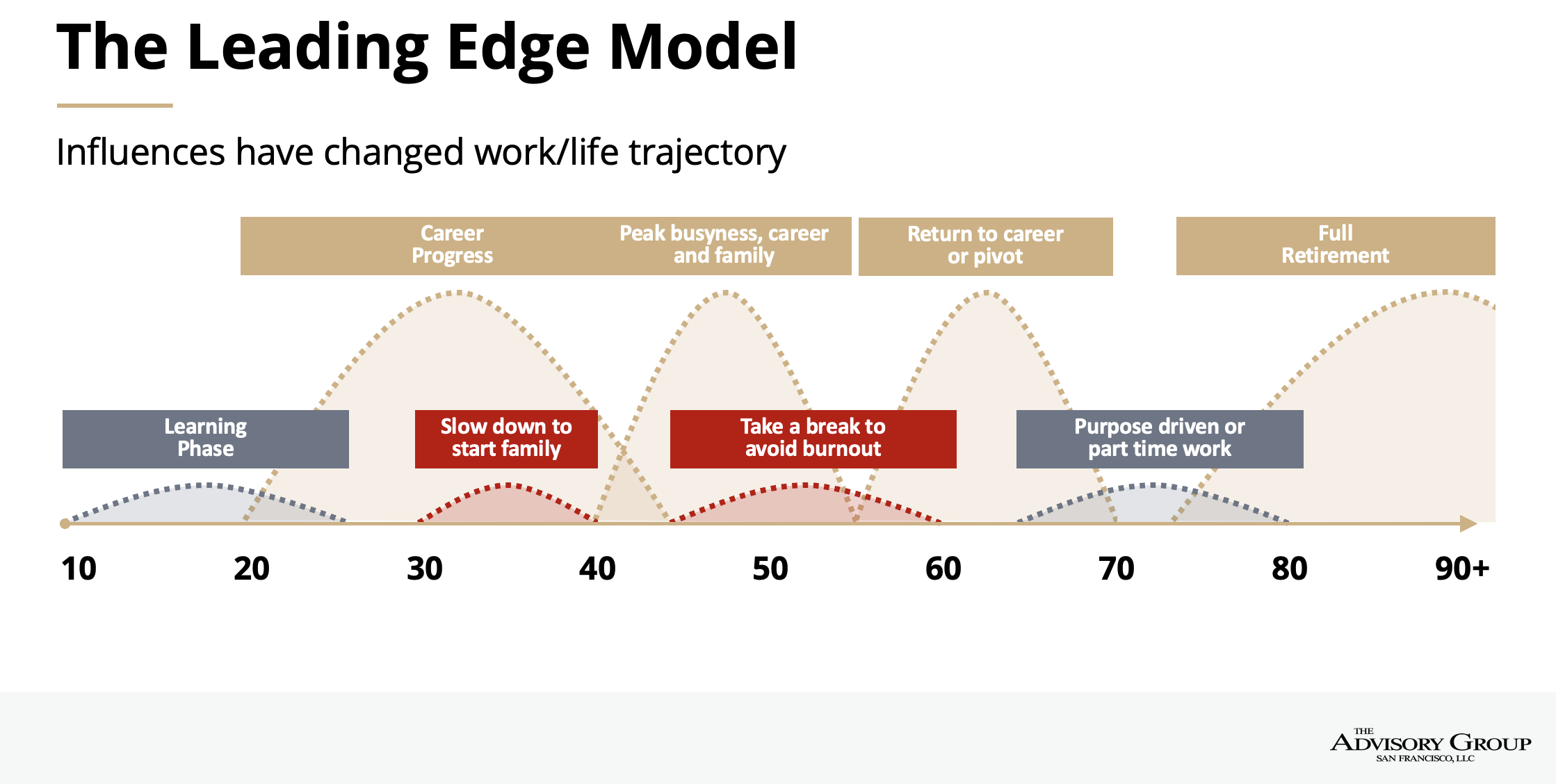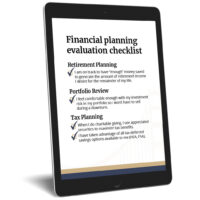
Mastering longevity: Financial planning strategies for your health and your wealth
The so-called “sandwich generation” is squished between their aging parents and adult children, like a piece of lettuce. That’s how some are now referring to Gen Xers (born roughly between 1965 and 1980). Between work demands, running a home, and responsibilities to both your parents and your children, midlife is often a time of “peak busyness”.
The upside of this stressful time is, it often serves as motivation. The weight of questions like “What happens when mom and dad are gone?” and “What if something were to happen to me?” may push Gen Xers, in particular, to assess their current situation. If you’re in your 40’s or 50’s, you can take steps now for better health and financial security in later years.
The 100-year lifespan is here
People have always sought to live longer. And they are, thanks to medical and technological advances. The Stanford Center on Longevity says 100-year lives will be common for those born today in the United States. And adapting to this “New Map of Life” will require profound societal, cultural, and institutional changes.
With centenarians claiming 0.027% of the U.S. population, you’re probably not betting on living to 100. But as research shows, the prevalence of centenarians has nearly doubled in the past twenty years. And, thanks to social and lifestyle factors, longevity tends to be higher in western parts of the United States. Loma Linda, CA was even named one of the now-famous Blue Zones, where people live longer than average.
Given increasing life expectancy and the changing cultural tides that come with it, what does this mean for the sandwich generation? Here’s how you can plan ahead for the long game.
Work to keep your body healthy for a longer time
Aligning health span to life span means keeping yourself healthy for as long as possible. Many experts agree, the key to good health is an optimal balance of nutrition, exercise, mental health, and sleep. Beyond being physically active, social activity and engagement in community have been linked to better health outcomes as you age.
Have a plan for preserving your health as you age, whether it’s the Blue Zone diet, advice from Dr. Peter Attia’s book Outlive, or inspiration from 93 year-old Richard Morgan,
Plan for the new work/life trajectory
The reality of longer lifespans will have a ripple effect on society. The impacts will be evident in how we approach aging, work, and life transitions. The traditional idea of “work for one company forever and then retire” is already fading fast. The same goes for the old work/life trajectory of “learn, earn, return.”

The new work/life trajectory is more of a continuum, with flexible routes in and out of the workplace. This could mean working more years in total, but with more breaks to avoid burnout. It may include periods of freelance work, semi-retirement, or a midlife gap year.

Think differently about your future cash flow needs
You might worry that taking a career break will hurt you financially. But it doesn’t have to. The ability to work longer, or work on-and-off, can have a net positive impact on finances, if you plan ahead. You may also need to reframe how you think about your cash flow needs in your later years.
For example, the more you keep in your accounts, for longer, the more you benefit from compound growth. At the same time, short breaks—when planned for and funded—can keep you earning longer so you don’t touch your investments. This could mean creating a separate, more conservative budget for off periods. Or, putting aside extra funds while you’re working, to use when you’re not.
Plan to take Social Security later
When planning for cash flow needs, don’t forget to factor in Social Security. A worker can choose to claim Social Security benefits as early as age 62, but doing so could reduce the benefit by up to 30 percent. On the other hand, for each year you delay past normal (or full) retirement age, your monthly benefits increase (until age 70).
The exact amount of increase depends on your full retirement age and birth year. For people born in 1943 or later, the increase is 8% per year of delay, up to a maximum of 32% at age 70. So, if you’re eligible for a $2,000 monthly benefit at full retirement age, waiting until age 70 would increase it to $2,640.
If you’re healthy and still working, plan to take Social Security benefits later. The SSA has a calculator to help you determine the effect of early or later retirement. You can also check your Social Security account to get an estimate of benefits based on your earnings.
You might not inherit (or leave behind) as much
Over the next few decades, Baby Boomers will pass somewhere between $50 and $80 trillion down to their Gen X and millennial heirs. This coming “generational wealth transfer” has gotten a lot of media attention, thanks to its size. But this may not be true as demographics continue to change.
Baby Boomers are living longer, and spending more of their retirement savings on healthcare and eldercare. The oldest Gen Xers are nudging 60, many of them with parents who are still alive and in their 80s or even 90s. This means children of Boomers need to prepare for the possibility of a smaller inheritance, received later in life.
Inheriting less and living longer could have a trickle down effect on your own heirs. A recent Prudential survey found many Gen Xers are doubtful that they’ll get large inheritances. And more than eight in 10 (84%) say they don’t plan to leave an inheritance themselves.
You should still plan for more health care expenses later in life
Even for healthy people, medical costs tend to increase with age. Older adults require more screenings and preventive checkups, and are more likely to need dental or vision care. A survey on medical expenditures found people 55 and over accounted for 55% of total health spending in 2021, despite making up only 31% of the population.
Still, the healthier you are, the more you can save on health care. And the less of a burden you can be to your children. If you’ve witnessed aging parents struggle with decreased mobility or mental acuity, you know how stressful it can be. Well, now is your chance to take actions for your health so your kids don’t go through the same stress.
Get your estate plans in order sooner rather than later
If you’ve had to have tough conversations with your parents about their finances, their final wishes, or how to handle tough medical decisions, then you know the importance of estate planning. Consider getting your own matters in order now, to spare your loved ones from stress or conflict in an already difficult time. Here are some of the most important aspects:
Advanced medical directives – Also known as a living will or advance directive, this document provides instructions for medical care in the event you cannot communicate your own wishes.
Durable power of attorney – A power of attorney authorizes someone of your choosing to handle certain matters, such as finances or health care, on your behalf. A durable power of attorney remains effective even if you become incapacitated.
Last will and testament – If you don’t have one, a financial advisor or estate lawyer can help you create one. If you already have a will, but haven’t reviewed it in a few years (or since any major life events), now is the time to do so.
Revocable living trust – This allows you to place your assets into a trust, and specify how those assets should be managed upon your death, or if you become incapacitated.
Letter of instruction – While not a legal document, a letter of instruction serves as a master guide to your financial and legal matters. It may include bank account numbers, passwords, contact information, and instructions for how to access your will, advance directives, and other legal documents.
Review designated beneficiaries – Review the beneficiaries on your retirement and other accounts yearly, or anytime there is a big life change (such as getting divorced or remarried). This will help you avoid probate and ensure your assets are going to the right person.
Trusted contact forms – At every financial institution and bank, make sure there is an up-to-date trusted contact form on file. This tells the financial institution who to get in touch in case there is a concern in the future about your diminished capacity, suspected fraud or elder abuse, or uncharacteristic financial requests.
Once complete, review these documents with your family members and make sure they know how to access them.
Does longevity mean you need long term care insurance?
According to the U.S. Department of Health and Human Services, 7 out of 10 adults will need long term care in their lifetime. Do you have long term care insurance? If not, and if you qualify, would a policy make sense to cover some of the risk of this very important, very expensive care? What are the benefits and policy features you have or should seek out? You will want to evaluate, or seek out unbiased guidance from a fiduciary advisor, on whether a policy makes sense as part of your financial plan.
A financial plan designed for longevity
Is your financial plan designed for longevity? A financial planner can help you prepare for a longer lifespan, and all that comes with it. Let a professional handle your financial plans, so you can focus on your health span. Contact one of our Certified Financial Planners™ to learn more.
Want to see how prepared you really are? Download our midlife checklist and evaluate your current financial readiness.
The information provided herein is for informative and educational purposes only. The use of hyperlinks to third party websites is not an endorsement of the third party. Third party content has not been independently verified. To understand how this content may apply to you, please contact a financial advisor.







